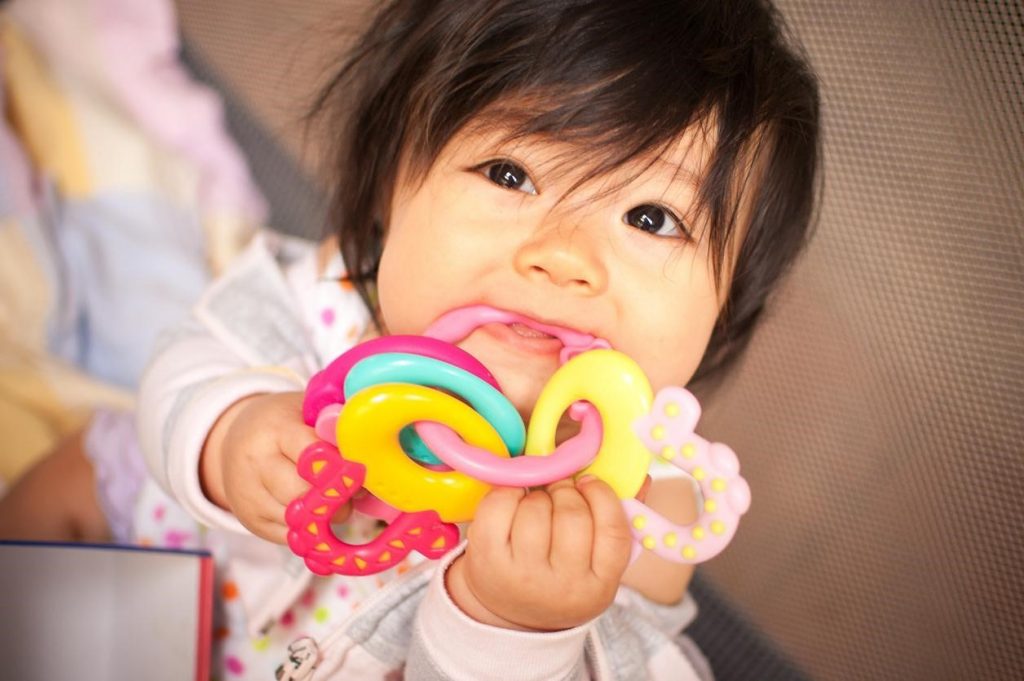Reasons children bite and how to deal with these situations
There are many behavioral issues facing child care providers on a daily basis, but biting is one of the most challenging. It requires managing the behavior and its underlying cause, the children involved, and the parents.
Biting is a very common behavior in young children, but that doesn’t make it any less concerning or difficult to deal with. There are a variety of reasons why children bite, and it’s important to understand what those are so you can get to the bottom of the issue quickly and prevent future incidents. There are also ways to deal with these situations to set yourself up for success in the future.
Reasons why children bite
As an adult, it’s difficult to understand why children bite one another. Where do they get the idea to do that, and what does it mean? It turns out there are many possible reasons why children bite – some harmless, some that need more attention.
Frustration
Children may bite someone else because they don’t know what else to do. They’re frustrated about something and don’t know how to express it. Biting someone is freeing for them and releases some of the pent-up frustration.
Attention
Acting out is a very common way for children to ask for attention. Biting is just one example of how this behavior can manifest. A child may be seeking attention from you, their family, or just in general.
Copying
Children may bite simply because they saw another child do it and they want to know what it’s like. It’s important to deal with this early so it doesn’t spread throughout the group.
Teething
Infants and toddlers who are teething will look for relief almost anywhere. Biting, for this reason, is usually just an innocent attempt to lessen the discomfort they’re feeling. Whether they’re biting a person or teething ring doesn’t really matter.
Curiosity
Infants and toddlers are famous for putting objects in their mouths. That’s how they explore the world and discover new things. Biting can be another exploratory activity for them as they discover the difference between people and objects. They may also be curious about what happens when they bite someone and the type of reaction they’ll get when they do.
How to deal with biting
If a child starts exhibiting biting behavior, it’s important to pay careful attention to all the details surrounding each incident:
- Which children are involved? Do they have other issues between them?
- What was happening before the bite occurred? Was there a trigger?
- Does the biting happen at certain times of the day or in a certain location?
Stick to a routine
This is a good idea no matter what, but sticking to a routine gives children stability so they know what to expect. Changing things in a child care setting too often can lead to uneasiness and frustration, which can, in turn, lead to biting.
Supervise and eliminate triggers
If a child has a biting incident, it’s important to monitor them closely for a period of time afterward. If you notice a situation escalating, intervene quickly to avoid another bite.
You should remove any objects or avoid situations that you think could lead to biting. For example, if a child always bites another specific child, separate the two until the overall situation is resolved. There may also be problems with specific toys or books. Consider removing them completely or providing additional ones to appease everyone.
Fulfill attention needs
It was mentioned before that some children may bite as a way to get attention. To avoid this, make sure you are spending quality individual time with each child every day. Let them know that you see them and are there for them. This may eliminate biting, as they are receiving the positive attention they’re craving.
Use appropriate discipline
Even though biting is serious, it’s extremely important that you remain calm and open in these situations. You have two priorities: the biter and the child who was bitten. Both need quick and generous attention.
Make sure the child who was bitten is OK physically and mentally. You may need to apply first aid if the bite is bad enough. You should find something to keep this child busy while you attend to the biter. If the child is shaken up or needs more attention, you can ask another provider to step in and help.
Tell the biter that biting behavior is not OK and it hurts. Young children may not realize that their actions can cause someone else pain. This is also a chance for the child to develop emotionally. Tell them that it’s OK to feel whatever they’re feeling but that biting is not the way to express it.
If both the biter and the child who was bitten are OK with it, you should encourage them to apologize. Most importantly, take the time to listen to each child so you can understand the full situation and what led to the biting. Although biting is never acceptable, there may be a reasonable and preventable explanation as to why it happened.
How not to deal with biting
Negative reinforcement or an overreaction from you can make the situation even worse. You should not bite the child back or use any kind of forceful (verbal or physical) discipline to teach the child a lesson. This only reinforces to the child that violence is an acceptable way to deal with a problem.
Don’t force the biter and the child who was bitten into doing anything together afterward. This includes an apology. Forcing children who aren’t really sorry to apologize negates the entire purpose of saying “I’m sorry.” Sometimes, children just need some time to themselves or with other activities to calm down and process what just happened.
Lastly, try not to make too big a deal out of biting, at least at first. Again, children can seek attention by acting out negatively. By giving them an unnecessary amount of attention, you could be reinforcing the bad behavior.
Above all else, stay patient and be consistent with biting behavior. Make sure children know the rules and why they exist so they understand why biting is bad and how it can hurt others.
The Virginia Infant & Toddler Specialist Network helps improve the quality of care for infants and toddlers through extensive resources, services, and education for caregivers. Learn more about how we can help you improve the standard of care.




